I'm taking my first course in electronic circuits and I'm a little lost when it comes to combining NMOS transistors with capacitors. In particular I am having trouble with finding the steady state for Vo(t) in the following diagram.
Can someone point me in the right direction? My thoughts go as far a recognizing that steady state means there will be no current going though the capacitor as it acts like an open circuit.
The intial conditions are Vin = 0 V and Vo(0) = 0 V (cap is initial uncharged) and phi(t) is turned low(0 V) to high (5 V)
Edit : the parameters of the nmos: \$V_{Tn} = 1 V\$ and \$k_n=1 \mathrm{\frac{mA}{V^2}}\$
